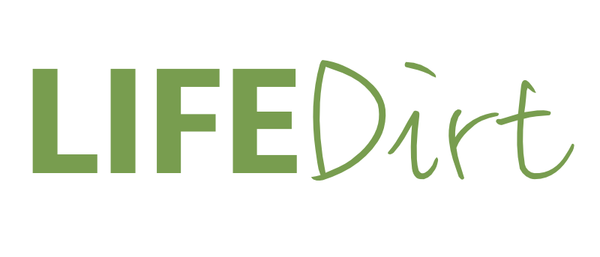What is so lively about dirt? It’s a strange thing that the word “dirt” is used for both a mess and the very substance that brings us food and life. What looks like dust is really teeming with potential. That's the idea I (Miriam) wanted to play with when I came up with the name of our company.
Some of our partner farms pay special attention to the health of what lives in the dirt, because they know the importance of this both for their own production and other crucial outcomes such as carbon sequestering.

photo from regenerationcanada.org
In Pleasant Ridge, outside of Rogersville, NB, La Cooperative Ferme Terre Partagee (FTP) raises livestock, grows vegetables, and creates value-added products that they sell in a variety of ways. They’re a certified organic farm. Organic doesn’t necessarily mean regenerative- and this is the word I want to focus on for this blog post.
I’ve been taking a permaculture course through Oasis Farmery in Fredericton, and started learning more about the difference between the mindsets of sustainability and regeneration. To keep it short, sustainability generally focuses on lack, and what can be done to reduce the scale of climate disaster. Regeneration focuses more on assets, and playing a role in restoring the earth to its innate ability to renew and flourish.
Regenerative agriculture is a method of land stewardship that seeks to address climate change, protect biodiversity, and enhance the productivity of farms. To some people, including Rebeka Frazer-Chiasson at FTP, Regenerative Agriculture is simply… farming. There are many principles behind Regenerative Agriculture. One of the major principles of FTP is Maintaining Biodiversity. FTP fosters an environment of symbiosis across species for the good of each species, the earth around them, the Earth at large, and the food that is produced. Among other ways, they pursue biodiversity through:
- Diverse Cropping Systems & Intercropping
- Multispecies Cover Crops
- Riparian Buffer Zones
- Pollinator Strips
- Integrating Livestock
- Habitat Creation
The farm sells vegetables through a CSA (Community Supported Agriculture) program, as well as at the Dieppe Market, Food Depot Alimentaire and resalers such as LifeDirt Foods! A few weeks ago our large boxes featured beautiful daikon radishes, straight from Terre Partagee. In the CSA model, consumers (generally) pre-pay for a share in a farm’s harvest and receive their produce on a regular basis throughout the season. Lots of local farms pursue this type of model in the summer and fall.
FTP is a cooperative farm on Frazer-Chiasson’s family land, and also hosts WOOFers. Community is a big deal to these folks. They are using their farm to support people and lift people up. And they’re pursuing a closed-loop model where the product of one process becomes the input for another. A big part of this is building up the soil, which brings us back to our opening question: what’s so lively about dirt?
Regeneration Canada says, “Most biodiversity is found in the soil. According to soil biology researcher Dr. Elaine Ingham, a teaspoon of soil contains up to one billion bacteria cells.” (https://regenerationcanada.org/en/maintaining-biodiversity/) We all know it is also home to insects and earthworms. But what are all these beings doing in the soil?
According to Regeneration Canada, the living beings in the soil help to:
- cycle nutrients to make them available to plants (and later to humans)
- absorb carbon from the air and break down toxic gases
- build soil structure to create resilience to flood and drought
- purify water passing through
- create the conditions to nurture plant growth
- break down toxic chemicals in the soil
The nutrients we receive in our food don't just depend on us eating a "healthy carrot," but how that carrot was grown and in what type of soil. We are so grateful to the team at Terre Partagee and other farmers in our region and across the world who are working hard to keep the soil healthy for the benefit of more than just their immediate community. Isn't it amazing that by creating the conditions for growing nutritious food, farmers are also participating in the detoxification and renewal of the earth? And we get to be part of it!

Summer savoury from FTP in one of our fall produce boxes
--
If you really want to learn more about building soil, scroll through this PDF: https://www.sare.org/wp-content/uploads/Building-Soils-for-Better-Crops.pdf
Read through the stories of regeneration here: https://regenerationcanada.org/en/stories-of-regeneration/#articles-all
And learn more about the farm here: https://www.fermeterrepartagee.org/fr/nos-paysan-nes
